|
Chapter 5
"Columbus"
Now
I’m the one who’s nervous. We’re still descending in the
hold over the Rickenbacker 5R outer marker. I had taken
the controls from Joe a few moments ago and he’s busy
studying the approach plate with his flashlight.
“Mark”, he says. I roll left to a standard rate bank,
working the trim wheel a little to maintain 500 fpm.
We’ve pulled the power back some more, but the airspeed
is still 145, reflecting our ever so slight nose down
attitude.
I work at keeping my scan going; it’s kind of a juggling
act, trying to hold the flashlight and the yoke, and
still have a hand for the big trim wheel. Flashlight in
the right hand, left on the yoke seems to work. I can
turn the trim wheel with the heel of my palm while still
holding the light, if not exactly aiming it accurately,
as long as I don’t have to adjust it too far. It just
takes a little trim change going into the turn, then
going the opposite way by the same amount as we roll
out.
Fifteen minutes of this and I’d probably get pretty good
at it. I’m rough, but it’s good enough. We won’t have
fifteen more minutes.
Before I know it we’re going through 3,500 and in the
turn back inbound. Finish this turn, then one minute
straight, one minute turning outbound and we’ll be in
the procedure. It will all come together quickly now,
one way or the other. Have to do this right – damn sure
don’t want to end up going around to try again. We have
enough fuel by dead reckoning from the last known
quantity for at least two more tries, maybe three,
depending on our unknown climb performance but that’s
not the way I plan to spend the evening.
“Mark”, again from Joe. I’m a few seconds behind him.
I’d let the bank angle come shallow and the nose hasn’t
come back around to 050 yet. I hold the turn for a few
more seconds, then begin rolling level, palming the trim
with the light shining around madly. This is the last
inbound leg, parallel with but offset from the extended
runway centerline. The next turn will line us up on that
line headed away from the airfield. 3,100. It’s time to
raise the nose. I add a little power, but not much. I
want to get down to 130 knots now, but don’t want to
sink below 3,000 yet. Back pressure…more back
pressure….that’s it. Trim…trim…good.
“Full rich”, I say. Joe pushes the mixture levers the
last inch to the full forward stops. I can hear a slight
downbeat in the engine noise. They were making more
power while still leaned out a little, but I have all I
need for now.
The big plane is stable. At this weight there’s a lot of
inertia and nothing happens very fast unless you let the
nose drop and the sink rate creep up. It’s a predictable
sweetheart of an aircraft, a pilot’s airplane. Big
enough not to be skittish and dance to every little gust
and turbulent eddy, but still small enough to feel
through the controls. The big Fairchild talks back to me
through my left hand on the yoke and through the soles
of my feet and my posterior in this damnable
uncomfortable seat. Its message is more subtle than the
bellow of the radial engines; this is the wing and the
control surfaces speaking silently to me. The aircraft
seems to be telling me it will do me right if I do my
part.
“Mark”
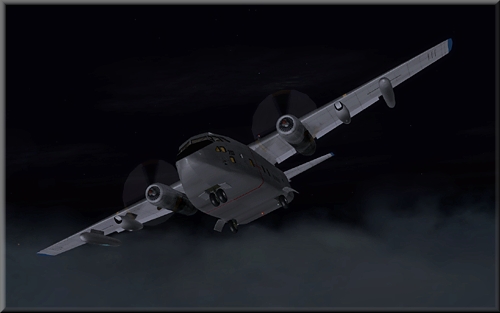
“OK, last turn in the hold.” We’ll make this final
one-eighty and roll out on 230 degrees, the reciprocal
of the approach course. After flying five miles we’ll do
the procedure turn; forty-five left…straight for one
minute…a one-eighty left…a short straight leg and then
intercept the approach course, 050 degrees, with another
forty-five degree turn, this time to the right. Done
right, this will place us inbound on the extended runway
centerline at about eight miles, still three miles out
from the outer marker. It sounds easy. It is easy, if
the lights are on and the NAV1 radio is alive. Well,
easier than this. I’ll never bitch about having to fly
an ILS again.
We’re level at 3,000, not yet in the clouds, but I can
see them not far below us. It looks nearly solid. I need
to concentrate on flying the approach as precisely as
possible. If anyone’s going to be looking outside, it
should be Joe, not the guy flying the approach, though
it’s not as if I’ve got localizer and glide slope
needles to concentrate on or anything. I’ll be getting
my cues from Joe verbally from here on, and from those
gauges I’m trying to scan. Everything else on the panel
is meaningless.
“Mark!” This time I’m right on, heading is coming round
to 230. I roll level, with the airport over our shoulder
at five miles. Five miles now to the turn; about two and
a half minutes. I fidget in the seat, watching the five
staring flight instruments. Drifting up, speed bleeding
down. My nervousness translates to an unconscious pull
on the yoke. Correct it; that’s better. Relax!
An eternity later I hear, “Fifteen seconds”; a half-mile
from the turn now.
“Turn.”
I start the turn, concentrating on maintaining a steady
3,000. We’ll lose a couple of knots in the turn. Better
add a little power. We’re at 130 now and don’t have much
idea how far the flaps are down. Better not get any
slower, especially in a turn. Handling is mushier now,
more hesitant with those extra 15 knots gone. Should
have held on to 145 knots through the procedure turn,
but we’ll ride it out like this now. Stick to the plan
unless it’s fatally flawed.
The procedure turn goes better than we have any right to
expect. I’ve got the altitude and airspeed nailed now.
The big Fairchild seems to want to do it right too. A
little over a minute for the one-eighty, but a shallower
bank is better than one too steep at this speed. Now
we’re turning right to 050, headed for the barn.
“You’re left a little.” The heading is good; I bank
right, turning the nose less than ten degrees.
“Coming in, that’s good.” I return to 050. “Seven
miles”, still at 3,000. I reduce power a little, letting
the nose come down a degree. I want to cross the marker
in two miles at 2,500. The VSI needle seems riveted in
place. My head knows that it lags, it’s supposed to. My
hand wants to push the nose down, start the little
needle moving. Hold on – it’ll respond. It does, at
last. We’re descending again.
“Six miles.” The altimeter still show’s 2,850. I’m
higher than I’d planned, but still OK. Crossing the
marker a little high is acceptable; we’ve got five more
miles between marker and threshold to adjust.
Three-fifty down, now four hundred, still increasing.
Let it sink. I need seven hundred per minute after the
marker. Don’t get timid now. I fight the urge to add
power.
The VSI is at five hundred with a slow downward trend
when Joe calls the marker. 2,600 – too high. Back
another nudge on the throttles, the nose dips almost
imperceptibly. Everything needs to be smooth now.
Anticipate, don’t react. Trends are as important here as
instantaneous values. The vertical speed is increasing.
Don’t want to let it get too high. I need to arrest it
at seven hundred, seven-fifty tops. It’s hard to read 50
fpm on that gauge – the graduations are pretty closely
spaced on the face of the meter. A glide slope needle
would be a big help.
At four miles I’m working hard. It’s a natural tendency
to pull back on the yoke when the pucker factor starts
to climb. Have to fight it. Let the trim keep the nose
where it should be. Fly the throttles. I should be at
2,150 here, but still have 2,250. Is there a tailwind?
No, I don’t think so – I’ve been too timid with reducing
the power to get my sink rate right. Back some more on
the throttles.
“How’s our line?” I ask Joe in a staccato query full of
adrenalin.
“Just starting to drift left again – still close.” I
adjust. The VSI is at seven hundred now, maybe the width
of a graduation mark more. Watch it; don’t let it go
lower now. I sneak a look outside. Cotton wool, the
darkest shade of gray; the stars are gone. We’re in it.
Let Joe look. Keep the scan going – don’t fixate on one
gauge.
As we come ever closer to three miles, my inner ear
exaggerates the sink rate, screaming at me to push the
throttles, pull back the yoke – do something! It’s
difficult – no impossible – to ignore it. Don’t succumb!
The VSI is right on; the altimeter says we need to be
lower. Joe calls the milestone. The altimeter says
1,850. Still a little high, but only 50 feet; the trend
is in the right direction. Can’t let it sink too far
though. Will need a little power soon. Now? No, not yet.
Hold on for a few more seconds. Let her come down to
that imaginary glide slope line we calculated so calmly
almost a half-hour ago.
“Anything”, I ask Joe. He’s craning up to look over the
top of the panel. He wants to see the ground as badly as
I want him to see it.
“Nothing.”
“Too soon.”
He’s back on the GPS. “Drifting left again, just a
little. Cross wind?”
“Maybe a little. I’m not correcting much.” I nudge the
rudder again, slewing the nose a degree or so, hold it
for a second or two to let the aircraft actually change
direction, then relax it.
At two miles the altimeter is right on our target
altitude, 1,550. I give the throttles just a tiny nudge
forward to stop the increasing trend. The flight
instruments all seem to be OK. Only two hundred feet to
the MDA. We should be breaking out any second.
“Lineup?”
“OK.” Joe’s looking hard again, craning up as high as
his belt will allow, glancing back to his GPS every few
seconds. Our nose is higher than for a normal approach,
because of the flap setting. Our higher approach speed
helps some, but the AI says we’re still a couple of
degrees more nose up than we’re used to.
1,500 - - - 1450 - - - 1400… Come on! 1,375. I begin to
get mentally prepared for the go around that I so
desperately wanted to avoid. 1350. I tighten my grip on
the yoke, reach for the throttles.
“I’ve got…something…”, Joe says tentatively. I begin to
pull to arrest our sink, fixated on the altimeter
descending through our MDA. I try to push the throttles,
but my right hand doesn’t respond. My left hand is doing
the right thing; my right seems to be listening to Joe.
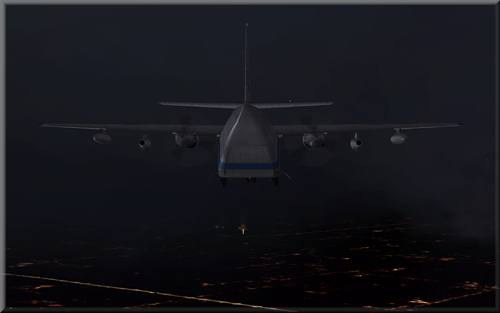
“THAT’S IT! I’ve got approach lights. Threshold. We’re
out!” My left hand pushes forward again, while my right
recoils from the throttles. Airspeed? I was pulling. 127
and sinking, get the nose down some more, get those
three knots back. OK. That’s good. I look up. What a
beautiful sight! Laid out before us in twenty plus mile
visibility is the entire field, with both those
beautiful, beautiful runways and all the lights in the
world. I’m craning up too now. It’s hard to see with the
nose this high, but it’s doable. Our position looks
good. I note red and white on the approach slope
indicators. Three of the four are white; we’re a little
high.
An airport at night is an attractive panorama,
particularly viewed from the air where you can see it
all, the colors, the patterns, sometimes the moving
traffic, rotating beacons, flashing amber lights on
ground vehicles. It’s just breathtaking sometimes and
I’ve never tired of seeing it. Any airport, any night,
but never more so than tonight. I’m almost moved to
tears by the sight. Except for our two flashlights these
are the first lights we’ve seen in almost two hours.
“Traffic?”
“None. Nothing I can see.” Joe’s almost standing now,
straining against his seatbelt, looking over the nose.
His excitement matches my own. We’re like a couple of
kids who’ve been given the keys to the candy store.
I’m not going to hit the numbers. I’m too high for that.
It looks like a normal touchdown zone arrival, maybe a
bit long even. I hate to give away those precious feet
of runway, but making a play for it now is just going to
upset the approach. Take what you get! I pull the power
back another good handful and the nose comes down enough
for a better view. Nine-fifty on the altimeter now, but
it may not be right. We’re going to lose the threshold
lights under the nose in a couple of seconds.
“They found the green light” Joe says matter-of-factly.
I glance left to the tower cab and see a bright green
light coming from near the top. I’ll be damned. First
time I’ve ever seen one used.
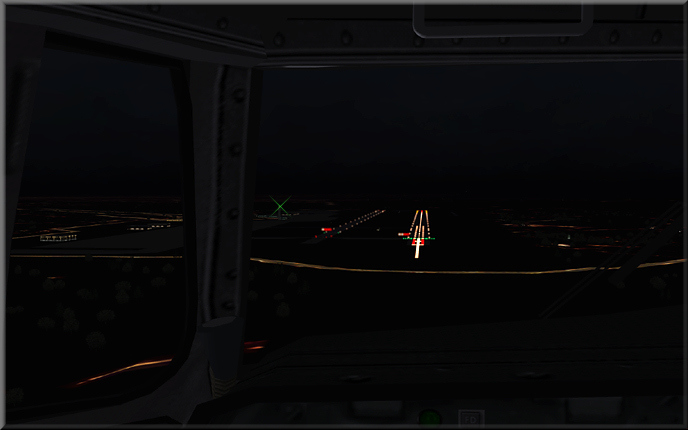
I’m watching the runway edge lights now. I can still see
the approach slope lights and just the last couple of
threshold lights on the extreme left as I press my head
against the side window for a better angle. Everything
else is blocked by the panel. The threshold flashes
beneath us on my left, fast! Flare…back, back, throttles
back some more. It’s hard to judge the height with the
high angle and no landing lights. The runway lights are
moving by so fast I can’t get an impression of how high
we are. We’re floating along who knows how high above
the rushing tarmac below. Fly the speed off. I’m still
watching the runway lights flash past on my side.
Joe say’s “Right of center”, with some concern in his
voice. We’re still floating…ground effect no doubt.
Suddenly the little hairs snap up again. This is too
long in the flare – we’re high. I grab for the
throttles, add some power to arrest the sink, trying to
hold the nose level. I don’t have the flashlight pointed
in the right direction now. Damn! Now my inner ear
senses a sink rate and this time it’s not wrong.
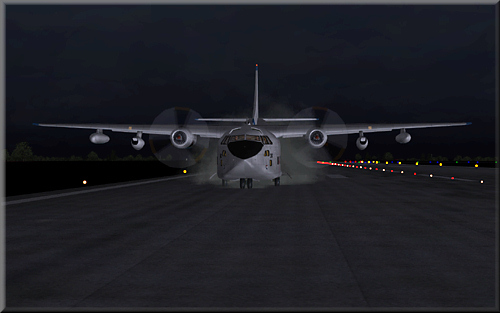
Wham! The sound of wheels screeching and rolling, just
for a second, then silence again. A bounce, we’re
airborne again. Keep the throttles in, arrest it. We
arrive a second time, this time sounding more like a
normal touchdown. Wheel noises from the main gear. I try
to hold the nose off as long as possible to get some
additional aerodynamic braking from the wings, but it
doesn’t last long. I’m on the rudder pedals as the nose
comes down. The nose gear makes its own arrival after a
few seconds and I’ve finally got a good view of the
runway ahead. We’re far right and still drifting that
way. Left rudder. Look at the airspeed. Still 105, can’t
use the brakes yet. We’re really rolling fast,
dangerously close to the right edge of the runway. The
right main gear must be very close to going off. The
rudder begins to bite and we start to move left,
slowing, but still racing along at a good clip.
Slowing now... 95 knots. We’re moving back toward the
center line. At 90 knots I begin to use the wheel
brakes. This is looking comfortable now. We appear to
have plenty of runway left. We’re still maybe a thousand
feet from where the lights go amber, marking the last
thousand. The red threshold still looks far away.
As we slow and I relax the pressure on the brakes I say
to Joe, “I’m going to roll out to the end and stop on
the taxiway between the two runways. We shouldn’t be in
anyone’s way there. We’ll keep them running and wait for
someone to indicate what they want us to do. I don’t
want to cross 5 L, even at the end without ground saying
so, somehow. The emergency is over, so we won’t take any
more liberties with the system.”
As we approach the end I add a little power to make the
turn onto the taxiway, rolling forward until I’m sure
our tail is well clear of 5R.
“Let’s keep them turning for a while and see what
happens, Joe. Open the cowl flaps, please.”
“Cowl flaps open”, comes his normal response after a few
seconds.
BOXWINGS AIR FREIGHT OFFICE – RICKENBACKER says the
lighted sign over the door as we walk into the building.
Ed Collier, the night manager leads us through the small
lobby, into a beat up conference room, away from the
ramp noise.
“You guys sure scared the hell out of us. We got a call
from the tower about an hour ago that said it looked
like you were having problems, but that you were still
inbound. We’ve been milling around in tight little
circles ever since, not that there was anything to do.”
“Did you call Ocala” I ask.
“No. Didn’t think of it until a few minutes ago; by then
you were on final and I didn’t want to be on the phone.”
He seems a little embarrassed.
“There’s no one in the office tonight – you’d just have
gotten an answering machine.” I’m pleased he didn’t call
my wife at home, but don’t say so.
“What the hell happened to you guys?” It had been too
noisy on the ramp to talk, so this was our first
opportunity to bring him up to date. When Joe and I had
come out the door on the left side of the aircraft the
first thing we did was to take a few steps aft and look
up at the flaps. Five degrees, maybe seven tops – a good
deal less than the normal position for the first notch.
We use full flaps when we’re this heavy, over 25
degrees. Thank God for that long runway. We just looked
at one another, each thinking his own thoughts about how
this could have ended. At that point Ed had walked up
after parking the white pickup truck with the amber
light bar on the roof and the big illuminated FOLLOW ME
sign in the rear, signalling for us to go into the
freight office.
What indeed? As I opened my mouth to begin answering,
the phone in the middle of the table warbled
insistently. All three of us jumped.
Ed picked it up. “Boxwings Air Freight, Ed speaking.” He
nods once or twice. I can hear a voice spilling out of
the handset, but can’t make out anything, just someone
talking. He says, “Yes, sir. They’re here in the office
with me now.” There’s a pause, then, “Yes, they’re both
just fine. That’s fine. You can come on over any time.”
He replaces the receiver.
“That was the tower chief. He wants to have a talk. He’s
on his way over now.” Doubt clouds his features and he
looks at me. “That’s OK, isn’t it?” I just nod. This was
inevitable. We’d cycled the system and there was going
to be a paper storm before this was over. The FAA and
possibly the NTSB were going to want to hear from us,
and ultimately to be heard themselves.
For a brief second my thoughts turned to whether I ought
to have an attorney before giving any statements. No, I
don’t think I’ll go down that road. Let’s play this out
on the high ground unless it looks like there’s blood in
the water. If the tone gets ugly I can always stop and
say I want counsel before continuing.
“Aaagghhmm” Ed clears his throat. “Do you want to tell
me about it now, or wait until he gets here?”
“Well, the short story is that we had a total electrical
failure about 200 miles south of here; both sides.” His
eyebrows went up about an inch. “Have you got any coffee
around here”, I ask, realizing that I’d not had a cup
since just after we cleared the Atlanta terminal area.
“Sure, sure”, he responded, jumping up to get some. He
returned in a few minutes with three big mugs emblazoned
with the company name and logo. On one, “ED” is written
in felt marker. Classy, I think to myself. As he sets
them down he asks about cream and sugar. I shake my head
and Joe follows suit.
“Ed, that cargo is going to have to be unloaded tonight.
With no power, the aft ramp and door will have to be
opened by hand. I think the winches have a manual
override but I’m not sure how it works. Have you got
someone who can start to look that over? Don’t let
anyone try to power anything up. Oh, and you’ll need to
have some portable lights rigged in the cargo bay. We
don’t want anyone to get hurt shuffling around in the
dark in there.”
I think some more. “I don’t want anyone to start looking
for the problem yet, and don’t try to hook up ground
power to the aircraft. We still don’t know the nature of
the problem and I want to understand it before we
accidentally bury any of the evidence.” It’s possible
that the FAA will want the aircraft quarantined pending
an investigation, but I don’t think so. This was just an
incident. It didn’t rise to the level of an accident, so
I don’t think things are going to go to that extreme.
None the less, I don’t want a ramp hand trying to plug
in the ground cart or worse, trying to fix what had
happened.

The conference room door opens and a stranger steps in,
a bit tentatively. “Ed Collier,” he asks.
“I’m Ed,” says Collier, rising and walking toward the
stranger with his hand extended.
“John Stankowski”, says the stranger, shaking Ed’s hand.
“FAA. I’m the tower chief.”
Ed introduces us, getting Joe’s last name wrong in the
process. Stankwoski shakes our hands in turn, a firm,
friendly handshake. He’s wearing khaki Dockers, black
loafers and a white dress shirt, open at the collar, no
tie. He has a light nylon windbreaker with FAA –
Columbus embroidered on the left breast.
“They called me at home…”, he checks his watch, “…about
and hour and a half ago. By the time I got in you were
already out of your holding pattern and inbound to the
field. I got up to the cab just in time to see you
land.” He politely doesn’t mention the bouncing arrival.
“I’ve debriefed my guys; just preliminarily. Center
handled most of this, until they saw you make your first
turn over the marker. Then they handed it off to my
folks, who were prepared to pick it up at that point.
Since you were filed for here, everyone suspected that’s
what you’d try to do if you could.” He paused a minute,
looked at me intently and asked, “What happened up
there? We were speculating it was just a radio problem,
but when you finally came in you had no lights.”
I gave him as full a post-mortem as I could put together
off the cuff. He listened intently, shaking his head a
little at times, nodding understanding at others. I
could see he was riveted. I ended with explaining the
decision to sit between the runways at the end, rather
than cross 5L or try to taxi anywhere without lights or
clearance. He broke a small smile at that point and
nodded.
“Well”, he said with more of a smile, “quite a night for
everyone, wasn’t it?” He pushed away from the table,
placed his hands on his knees and continued. “I’d say
you guys did a great job. We’re going to have to do a
formal investigation and file a report. We’ll need some
interviews and written statements from you tomorrow. The
NTSB guys may have an interest, but maybe not. Of course
Center and Washington will get their two cents worth in
too, but from our perspective here at Columbus, we’re
very pleased with how this was handled, in the air and
on the ground. By the way, my night controllers wanted
me to pass on their best regards. You had them sweating
for a while.”
As the FAA man left a few minutes later, Ed rose and
said, “That was a hell of a ride. I’m glad you guys
managed to work that out.” He shuffled his feet a
little, then said, “I need to get back out there. We’re
backed up. Had two departures held up when they closed
the field for you. There’s another to depart as soon as
the traffic backup is cleared, and we have an inbound in
about two hours. Have to see to getting your plane
unloaded too. You need anything else from me?”
“We need to use the conference room for a while. I want
to spend some time making some notes while this is all
still fresh. Later we’ll need a car or a ride to a
motel. Any chance someone can whistle up some
reservations for us. Maybe someplace near an all-night
restaurant?”
“Sure, sure. We don’t use the conference room much at
night. I’ll call the motel myself once I get things
moving out there. It won’t be a problem.”
“Thanks, Ed.”
I rustle up a couple of yellow pads and pens from the
outer office for Joe and me. Handing a set to him I say,
“Write up everything you can remember, as you remember
it. Don’t try to make this a smooth copy. This is just a
memory aid for later. Don’t spare the details, though,
and be critical. There’s a lot we can learn from this
and others may benefit too. Try to think of what we
overlooked, and what we should have done better, or
differently. OK?”
A quick nod. He picks up the pen, looks down at the pad
of paper, then looks back up at me.
“Boss?”
“Yes?”
“I’ve been job hunting. I’ve got an offer from
Southwest. I was going to give you notice tomorrow when
we got back to Florida.” He looks down, then back up at
me.
“I’ve been thinking about it. I’m going to turn them
down, if that’s OK with you.”
Sometimes things just work out. Life is good.
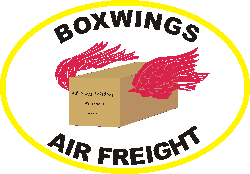
-
End –

Click on
logo to download chapter 5 as pdf |